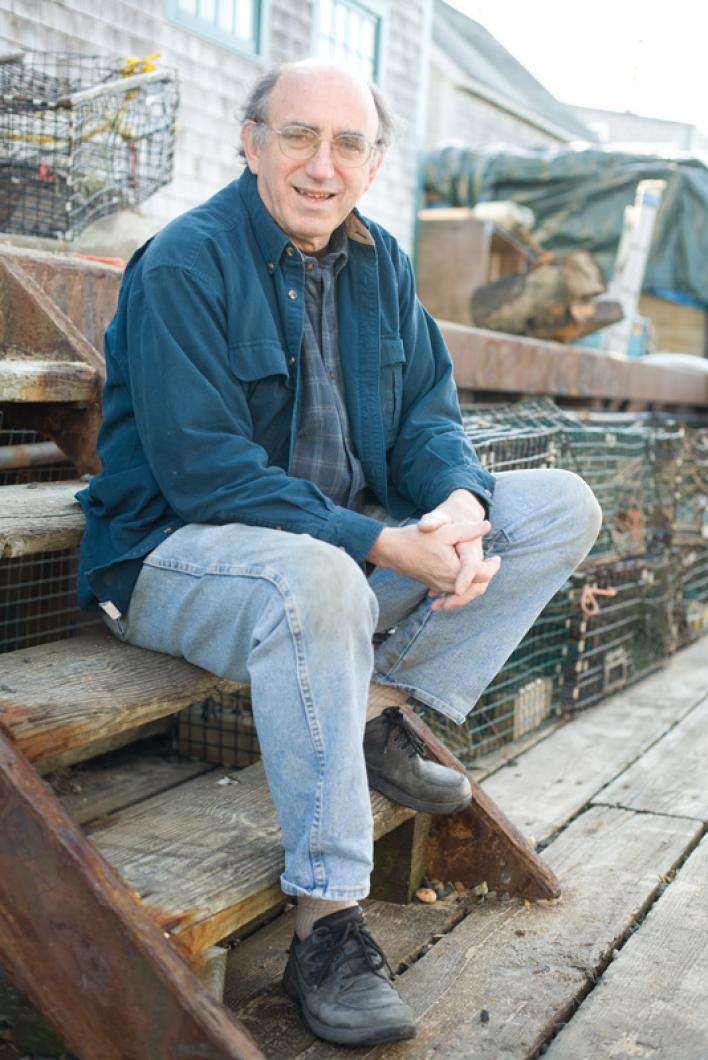Last month Congress allotted $170 million to the National Oceanic and Atmospheric Administration (NOAA) — an unprecedented funding pool for the fisheries service — with the goal of creating several thousand jobs.
Warren Doty knew he wanted a piece.
“They said, we want jobs,” said the Chilmark selectman and member of the Martha’s Vineyard Shellfish Group. “And I thought, okay, let’s go, I’ll give you jobs.”
Twenty-three to be exact. Working with other members of the shellfish group, Mr. Doty lodged a $3.3 million Islandwide shellfish habitat restoration project proposal last week. The plan has the potential to rejuvenate Island ponds and return Vineyard shellfishing to a 200-job industry.
The project joined 801 other proposals, totalling $2.98 billion, clamoring for the money from the NOAA restoration center in Silver Springs, Colo.
Getting any of the trillions of dollars in federal stimulus money flying around has proven harder than it looks for Mr. Doty, who has worked on applications for several Chilmark projects with no return.
But the NOAA grant has given him new hope.
“I’m happy to make this application because it’s much better organized,” he said. “It’s a real application, with a point review system. The others all seem very vague and there’s the sense that they’re just sent off into the ether. There’s no rules. This is very specific; there’s three readers and you can get a score. If your scores are high we get money. It’s a very attractive arrangement.”
Shellfish is an area in which the Vineyard can fairly claim expertise, he added.
“We can apply for wind and solar energy projects and, I’m sure I would offend some people to say, we don’t know exactly what we’re doing with that. But no one knows about bay scallops better than Martha’s Vineyard,” he said.
The project would take place over the next two seasons and create 31,200 hours of work. It calls for three administrative positions, would fund eight hatchery staff, and a total of 12 field workers spread among the towns.
It promises 15 million juvenile bay scallops and five million planted oyster seeds and includes an eelgrass restoration project. Another stated aim is to increase the Island working hatcheries to three, to include the Chappaquiddick and Menemsha stations along with the shellfish group hatchery on Lagoon Pond.
On a smaller scale this is all happening already, points out Rick Karney, director of the shellfish group.
Chilmark’s appointment last year of Isaiah Scheffer as a full-time propagation agent, and the Menemsha Pond restoration project begun by the Wampanoag tribe of Gay Head (Aquinnah) using a federal grant are examples. The shellfish group itself is a nonprofit consortium of the six Island shellfish departments, with ongoing restoration programs for Island ponds.
But Mr. Karney, who moved to the Island to become director of the shellfish group in 1976, remembers a far healthier shellfish industry.
“Back not all that long ago there used to be three or more times the scallopers on the Island,” he said. “There was a big decline in the 1980s across the entire habitat. You’re only going back 30 to 40 years to get those numbers. So there’s some hope that it could be reversed.”
If funded would this program do that?
“I would hope so. We’re hopeful,” he said. “NOAA wants to look at something experimental and this is something of an experiment but it’s not terribly experimental since we have a track record. There’s no guarantee, it’s a lot to do with the weather, we’re essentially farmers. But there have been cases where we’ve proved [propagation and restoration] have worked.”
Though the scale of the project would be unprecedented, because it has its basis in current operations, the group was able to meet the grant’s tight deadline.
“It came out of nowhere, but Amandine and I, we’ve been doing these grants for gazillions of years,” Mr. Karney said, referring to assistant director Amandine Surie,
News of the funding opportunity reached Mr. Doty while Mr. Karney was at a shellfish convention in Arizona. An initial draft was written by Mr. Doty and his wife Nan. The final proposal was ready in under a week.
“I’m really happy the way it came out, and I’m pretty confident about our methods,” said Mr. Karney.
Two hundred judges from across the country will evaluate the projects, assigning a set of scores before a short list is sent to an executive panel for the final choices. NOAA spokeswoman Laura Hoberecht said the team expects to be making choices by early May.
Christopher Doley, director of the NOAA restoration center, said the point system is based on three main criteria: readinesss, economic and ecological impact. Both the scale of the recovery act funding and the emphasis on economic impact of projects is something new for the agency, he added.
“We’ve been doing this 20 years and we do create jobs,” he said, “but no one’s done anything like this before. The volume of interest in this and in the recovery act in general is extreme.”
Pressed about a Vineyard proposal, Mr. Doley said he could not comment on specifics, but he did concede that with a project cost range from $500,000 to $20 million, proving deep impact is crucial.
“Urban areas are likely to be the most degraded and those tend to be the larger projects. It’s a federal grant so it’s for big projects with the greatest significance,” he said, adding: “But good things comes in small packages sometimes.”







Comments
Comment policy »